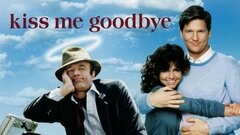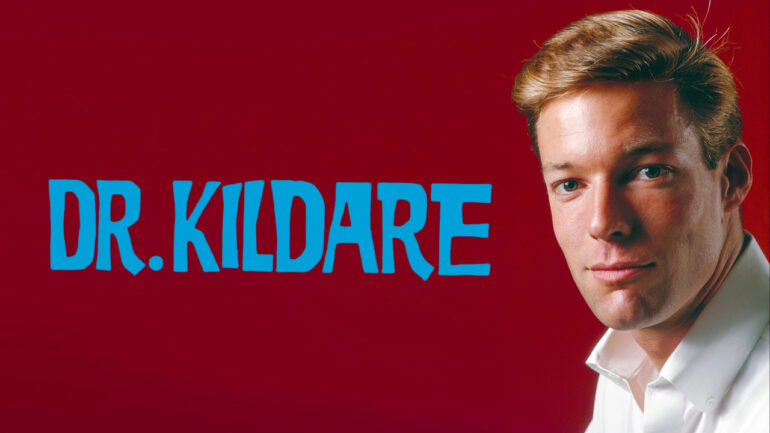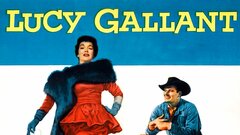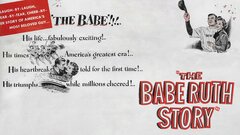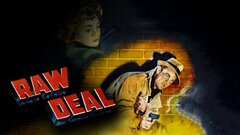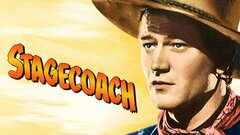Known among aficionados as "The Queen of Film Noir," Claire Trevor could play any number of heroines, but she proved particularly suited to the shadowy world of crime and mystery showcased in numerous films in the 1940s and 1950s. While not as glamorous as the most prominent actresses of the time, the husky-voiced blonde still captivated through force of character and the sincerity she brought to much of her work. Following some stage assignments and a few undistinguished programmers, Trevor gained her first significant industry attention via an Oscar-nominated performance in "Dead End" (1937).
However, it was John Ford's superb Western "Stagecoach" (1939) that really put Trevor on the map and she enjoyed lead roles in several major productions during the years that followed. Her turns in the superior film noir thrillers "Murder, My Sweet" (1944), "Born to Kill" (1947), "Raw Deal" (1948), and "Key Largo" (1948) established Trevor as one of its premiere players and she excelled as both determined heroines and debased antagonists. "Key Largo" also brought Trevor her only Academy Award and the powerful work she did in that John Huston classic as a deglamorized, desperate alcoholic provided a potent demonstration of her value as a character actress. Later regarded by some as more of a cult actress than a true Golden Age movie star, Trevor's filmography contained many persuasive examples of her versatility, which also extended to her stage and television assignments.
Claire Trevor was born Claire Wemlinger on March 8, 1910 in New York City, though she spent much of her childhood in Larchmont, NY. After finishing her initial schooling, Trevor attended Columbia University and the American Academy of Dramatic Arts, making her stage bow in a 1929 production of "The Seagull." She sharpened her skills further by alternating between parts in short films and repertory work in various productions. Trevor first appeared on Broadway in the comedy-melodrama "Whistling in the Dark" (1932-33) and remained on the Great White Way for the less successful "The Party's Over" (1933) before she graduated to features at Fox Film Corporation.
For the next few years, Trevor graced B-Westerns and other low-budget, mostly forgotten fare before she was called up for more prominent pictures, like "Dante's Inferno" (1935), where she starred opposite an ascending Spencer Tracy. However, it was the United Artists gangster saga "Dead End" (1937) that finally gained Trevor notoriety and her performance - that of a prostitute afflicted with syphilis, something that had to be discretely communicated in the film due to then-current Hays Code restrictions - resulted in an Academy Award nomination for Best Supporting Actress. Trevor also found steady work on radio, where she was paired with Warner Bros. powerhouse Edward G. Robinson for the newspaper drama "Big Town" (1937-1952) and stayed for the first three of the show's 15 years on the air. The pair were deemed to be a good fit and reteamed again the following year for the endearingly comic gangster saga "The Amazing Dr. Clitterhouse" (1938).
That year, she also married future screenwriter Clark Andrews, the first of her three husbands. The following year, Trevor was cast in the film that would totally change her life and that of her then-unknown leading man.
John Ford's Western classic "Stagecoach" (1939) was regularly cited as the critical assignment for John Wayne that initiated his rapid ascension from poverty row cowboy to A-list star. However, it also made a star out of Trevor, who played Dallas, the proverbial hooker with a heart of gold, one of the passengers The Ringo Kid (Wayne) was charged with defending from marauding Indians. While it followed the well-worn clichés of the genre, "Stagecoach" was put together with considerable skill by Ford and impeccably cast. With the career boost she received from "Dead End," Trevor was among the best paid performers on the film, earning $15,000 - five times what Wayne was paid. With the success of "Stagecoach," Trevor was quickly cast in further Westerns, including two more John Wayne vehicles, "Allegheny Uprising" (1939) and "Dark Command" (1940), by which time the pay disparity between the two performers had likely moved in the other direction.
Beginning with her supporting part in "Crossroads" (1942), Trevor also appeared in the sort of mystery-thrillers for which she would be fondly remembered by film buffs. She was a femme fatale who sought her father's killer in "Johnny Angel" (1945) and the patient girlfriend of amnesia victim Pat O'Brien in "Crack-Up" (1946). While fine in those assignments, Trevor was really on fire when cast as noir heroines who were either innately bad or just unable to resist their impulses. She was a killer in "Street of Chance" (1942), a young and dangerous gold-digger in the Raymond Chandler adaptation of "Murder, My Sweet" (1944), a divorcée who succumbed to the animal magnetism of psychopath Lawrence Tierney in "Born to Kill" (1947), and a gangster moll who aided her ex-con boyfriend in "Raw Deal" (1948). Trevor also provided the mood setting narration for the latter picture, one of the most strikingly photographed thrillers of the 1940s.
However, the finest of her forays into the genre, and one of Trevor's career highlights, was the star-studded "Key Largo" (1948). The John Huston film represented the fourth and final pairing of Humphrey Bogart and Lauren Bacall, and both were in fine form. However, as the main villain of the piece, Edward G. Robinson was granted the flashiest role as a notorious gangster who ducked the authorities by hiding out in a Key Largo hotel during a hurricane. Trevor played his long suffering, alcoholic girlfriend, forced to endure Robinson's repeated abuse and reduced to performing pathetic indignities. Thoroughly deglamorized, Trevor did a superb job of gaining viewer empathy. She also held her own against the two men, a particular achievement considering that this was one of the best roles Robinson had been granted in some time and he tore into the material with fervour. Trevor offered to work for less than her usual fee in order land the part. Her intuition about the role proved correct when she won the Best Supporting Actress Oscar.
By that point in her life, Trevor had been through two failed marriages, but her 1948 union with producer Milton H. Bren lasted up until his death in 1979. Bren subsequently produced "Borderline" (1950), which proved to be the last of Trevor's ventures into film noir and the couple's only movie collaboration. During her cinematic mystery run, Trevor made a one-shot return to Broadway in the short-lived farce "The Big Two" (1947) and also began moonlighting on the small screen in several of the live dramas that were popular at the dawn of the medium. Her performances in episodes of "Lux Video Theatre" (CBS/NBC, 1950-57) and "Producers' Showcase" (NBC, 1954-57) earned Trevor a pair of Emmy nominations and a win for the latter production, an adaptation of Sinclair Lewis' "Dodsworth." She made a brief return to big screen frontier adventures with items like "Best of the Badmen" (1951) and the 3-D feature "The Stranger Wore a Gun" (1953), She also earned her third Best Supporting Actress nomination via the big-budget adventure "The High and the Mighty" (1954), a reunion with John Wayne. Roles in "The Mountain" (1956) and "Marjorie Morningstar" (1958) followed, along with more television work, including a memorable turn as real-life mobster Ma Barker on "The Untouchables" (ABC, 1959-1963) and a pair of appearances on "Alfred Hitchcock Presents" (CBS/NBC, 1955-1962).
Trevor received a star on the Hollywood Walk of Fame in 1960, though the actress' output also began to slow during that decade, with her most noteworthy projects being Vincente Minnelli's drama about moviemaking, "Two Weeks in Another Town" (1962), and the highly amusing Jack Lemmon vehicle "How to Murder Your Wife" (1965). "The Cape Town Affair" (1967), an uninspired remake of "Pickup on South Street" (1953) set and shot in South Africa, turned out to be Trevor's last feature for a number of years. She instead turned her attention towards other pursuits, including the lead role in a touring company version of "The Killing of Sister George." Dual tragedies struck Trevor in the late 1970s. Charles, the son she had with second husband Cyclos William Dunsmoore, perished in a 1978 plane crash and then-current spouse Bren died of a brain tumor the following year.
Shouldering on, Trevor returned to the silver screen for the romantic comedy "Kiss Me Goodbye" (1982), which turned out to be her last motion picture. She also guest starred on "The Love Boat" (ABC, 1977-1986) and "Murder, She Wrote" (CBS, 1984-1996), and made her final appearance in the made-for-TV drama "Breaking Home Ties" (ABC, 1987). In her retirement, Trevor devoted much time to the University of California, Irvine's School of the Arts, where she acted as a mentor for students and was an advocate of the school's goals. Trevor died as a result of respiratory failure on April 8, 2000, a month after her 90th birthday. In the wake of her passing, Trevor's stepson Donald Bren and his brother made a $10 million donation to UCI, which renamed its arts school the Claire Trevor School of the Arts in recognition. In 2011, the school inaugurated its own Walk of Fame, with Trevor as the first to be honored. The actress also donated her Academy Award and Emmy statuettes to the school, which were put on display in the facility.
By John Charles



